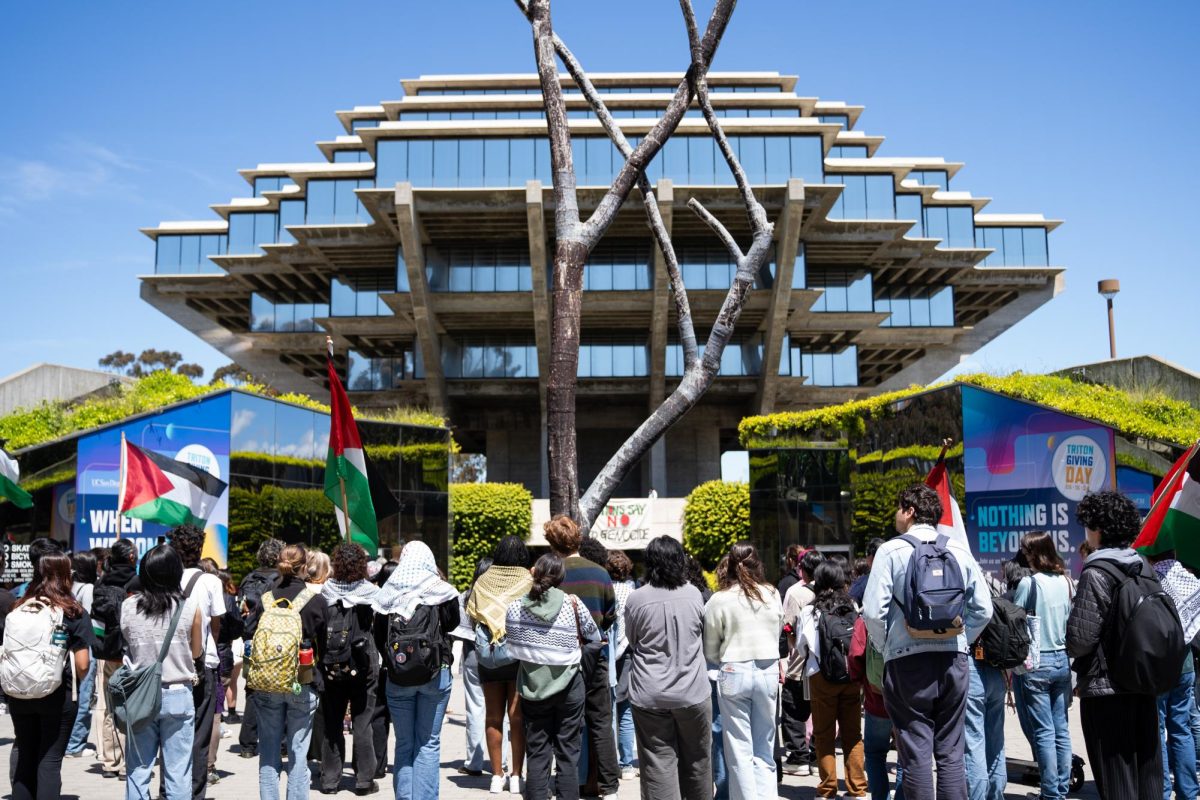Gov. Jerry Brown issues restrictions on water usage that orders state officials to implement limitations on this limited resource, affecting households and college campuses statewide.
UCSD and Student Initiatives Should Plan Ways to Save Water, As a Top Priority
UCSD must utilize efficient strategies to reduce water usage smoothly throughout campus; students’ quality of life is not the main concern in this case. Given our very public struggles with drought over the past few years in this state, people are expected to at least sort of care by now. Until water goes up significantly in price or is rationed, however, it seems unlikely that concerted efforts to preserve water will truly seem like a necessity to residents in California. It is always difficult to convince individuals of the impact their actions can make to the world at large.
Therefore, as Gov. Jerry Brown has realized, it must be the responsibility of large organizations with the resources to create a tangible reduction in their water usage to act first and act decisively. Among these responsible institutions must be universities like UCSD, which is the third-largest water consumer in the city of San Diego. If people, such as Tritons, will not work hard themselves to reduce their water footprint, they will be made to do so. As Brown said, the state is “done asking nicely.”
Luckily, one can see the effect of some water conservation measures around campus: Muir Field, for instance, is being converted from grass to AstroTurf and will re-open next year. This is indicative of one of the most indulgent aspects of Californian water usage — in the face of negligible rainfall, the state has imposed no significant bans on the watering of lawns. It is surely inevitable that all privately-owned grassy areas will be replaced by either artificial turf or drought-resistant plants that do not require vast volumes of water to maintain. So, with dozens of unnecessary lawns and fields to convert, it should not be too much to ask for UCSD to drastically reduce water usage. It must be an example to the city and the state.
— SAMSON THOBURN Staff Writer
Although UCSD Must Conserve Water in Response to Drought, Efforts of Farmers Are More Significant
While it’s definitely time for California officials to implement practical ideas for water conservation, the restrictions that Gov. Brown has set forth are not the best answer, especially in regard to UCSD. The university has already taken measures to conserve water by using recirculating pumps for fountains on campus and by replacing some of the fields with artificial turf, which would save approximately nine million gallons of water a year, according to UCSD Facilities Management. Actions such as this should be sufficient enough in UCSD’s mission to conserve water.
Interestingly, Brown’s mandate does not apply to farmers, who, according to Brown, “have already been hit very hard.” Brown added that he does not want to tell farmers which crops they can and cannot grow unless there is an “unprecedented” circumstance.
But with crops, such as almonds, requiring an insane amount of water — one gallon per almond, according to Brown’s state water director Mark Cowin — it would make sense to stop the planting of crops unnecessary to our diets. In this case, the California drought is a critical situation that must be responded to with appropriate actions, such as mandating which crops can and cannot be harvested.
Additionally, San Diego County officials have been looking into other ways, such as desalination, to save water that won’t interfere with campus life. Saltwater can be purified through Carlsbad’s own desalination plant. While it would require a significant amount of money and energy, it will be worth it in the long run. Solutions such as these should be taken more seriously so that college campuses like UCSD are not inconvenienced even more.
— ROSINA GARCIA Copy Editor







